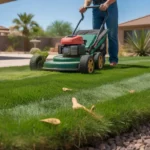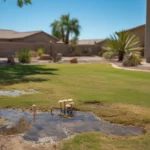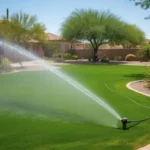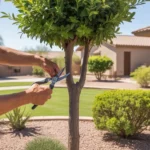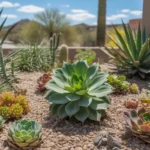As the warmth of spring arrives in the Southeast Valley, it’s time to give your lawn some extra TLC to help it thrive in the desert climate. With the right care and attention, you can coax your grass out of winter dormancy and enjoy a lush, inviting yard all season long. Here’s your guide to essential spring lawn care practices tailored for the unique challenges of the Southeast Valley.
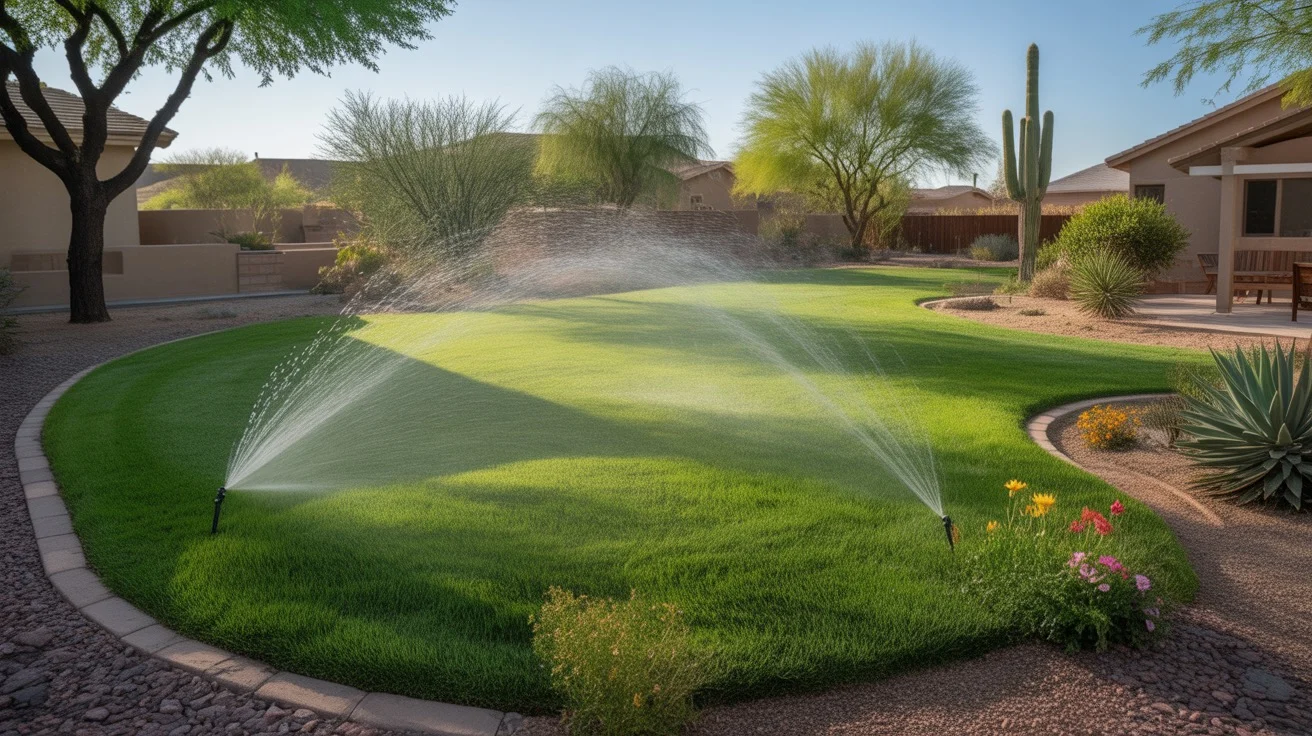
🛠️ Inspect Your Lawn and Tools
Before diving into spring maintenance, take a walk around your yard to assess how your grass fared over the winter. Look for any bare or damaged patches that may need reseeding or extra care. This is also a good time to tune up your lawn care equipment. Sharpen mower blades, change the oil, and make sure everything is in good working order.
One local landscaper recommends, “After winter, your lawn may be compacted, especially in high-traffic areas. Aerating in early spring can help loosen the soil and allow water, air and nutrients to penetrate down to the roots.” Consider renting an aerator or hiring a professional to give your grass a healthy start.
🛠️ Adjust Your Watering Schedule
As temperatures rise, your lawn will start to come out of dormancy and require more frequent watering. However, it’s important not to overwater, which can lead to shallow roots and fungal growth. Aim to water deeply and infrequently, allowing the soil to dry out slightly between waterings.
In the Southeast Valley, experts recommend watering your lawn 2-3 times per week, applying about 1 inch of water each time. Water early in the morning to minimize evaporation and give the grass time to dry before nightfall. Keep an eye on the forecast and skip watering if rain is expected.
As one Gilbert resident shares, “I installed a smart irrigation controller that automatically adjusts the watering schedule based on weather conditions. It’s helped me save water and keep my lawn healthy without having to constantly fiddle with the settings.”
🛠️ Mow High and Often
Once your grass starts actively growing again, it’s time to break out the mower. However, resist the urge to give your lawn a buzz cut. Mowing too short can stress the grass and allow weeds to take hold. Instead, set your mower blade to one of the highest settings, typically around 3 inches for most Southeast Valley grass types.
Mow frequently enough that you’re only removing about 1/3 of the grass blade height each time. This may mean mowing every 5-7 days during peak growing season. Leaving the grass clippings on the lawn can help return nutrients to the soil – just make sure the clippings are small enough to decompose quickly without smothering the grass.
🛠️ Fertilize for Lush Growth
Spring is the perfect time to give your lawn a nutrient boost to fuel vigorous growth. Choose a balanced fertilizer formulated for the grass type common in the Southeast Valley, such as Bermuda or Zoysia grass. A slow-release formula will provide a steady supply of nutrients over several weeks.
Follow the application instructions carefully, as over-fertilizing can damage your lawn. A good rule of thumb is to apply about 1 pound of nitrogen per 1,000 square feet. Water the lawn thoroughly after fertilizing to help the nutrients soak into the soil.
According to a Queen Creek landscaping company, “If you’re not sure what type of fertilizer your lawn needs, consider doing a soil test first. You can pick up a kit at most garden centers, and the results will tell you if your soil is lacking in any key nutrients.”
🛠️ Tackle Weeds Early
Spring is when many common lawn weeds start to sprout, so it’s important to get a jump on controlling them before they can spread. For small patches of weeds, hand-pulling or spot-treating with an herbicide can be effective.
If weeds are a more widespread problem, consider applying a pre-emergent herbicide in early spring before the weed seeds have a chance to germinate. Be sure to choose a product that’s safe for your grass type and follow the label instructions carefully.
One Mesa homeowner offers this tip: “I’ve had good luck with corn gluten meal as a natural pre-emergent weed control. It’s safe for the lawn and doubles as a slow-release fertilizer. Just be sure to apply it a few weeks before you plan to reseed any bare spots, as it can inhibit grass seed germination too.”
🛠️ Overseed for a Thicker Lawn
If your lawn is looking a bit thin or patchy, spring is a good time to overseed with new grass seed to help fill it in. Choose a grass seed blend that’s well-suited to the Southeast Valley climate, such as a Bermuda/ryegrass mix.
Rake the bare areas to loosen the soil, then sprinkle the seed evenly. Lightly rake the seed into the soil and keep the area consistently moist until the new grass is established. Avoid mowing the newly seeded areas until the grass has grown to mowing height.
A Gilbert lawn care expert notes, “Overseeding is a great way to thicken up your lawn and crowd out weeds. Just be sure to wait until the soil has warmed up to at least 65°F before seeding, typically in late April or early May for the Southeast Valley.”
🛠️ Embrace Desert-Friendly Practices
While a lush, green lawn is a point of pride for many Southeast Valley homeowners, it’s important to remember that we live in a desert climate. Embracing more drought-tolerant landscaping can help conserve water while still creating an attractive yard.
Consider reducing the size of your lawn and replacing some grass with low-water groundcovers, native plants, or permeable hardscaping. Choose grass varieties that are well-adapted to the local climate, such as Bermuda or Zoysia, which can go dormant during drought and bounce back quickly when watered.
As one Queen Creek resident puts it, “I’ve learned to work with nature instead of against it. By choosing plants that thrive in the desert and being smart about watering, I’ve been able to create a yard that’s both beautiful and sustainable. It’s all about finding that balance.”
With these spring lawn care tips tailored for the Southeast Valley, you’ll be well on your way to a thriving, lush lawn that can handle the challenges of the desert climate. By staying on top of maintenance and being water-wise, you can enjoy a yard that’s the envy of the neighborhood all season long.



